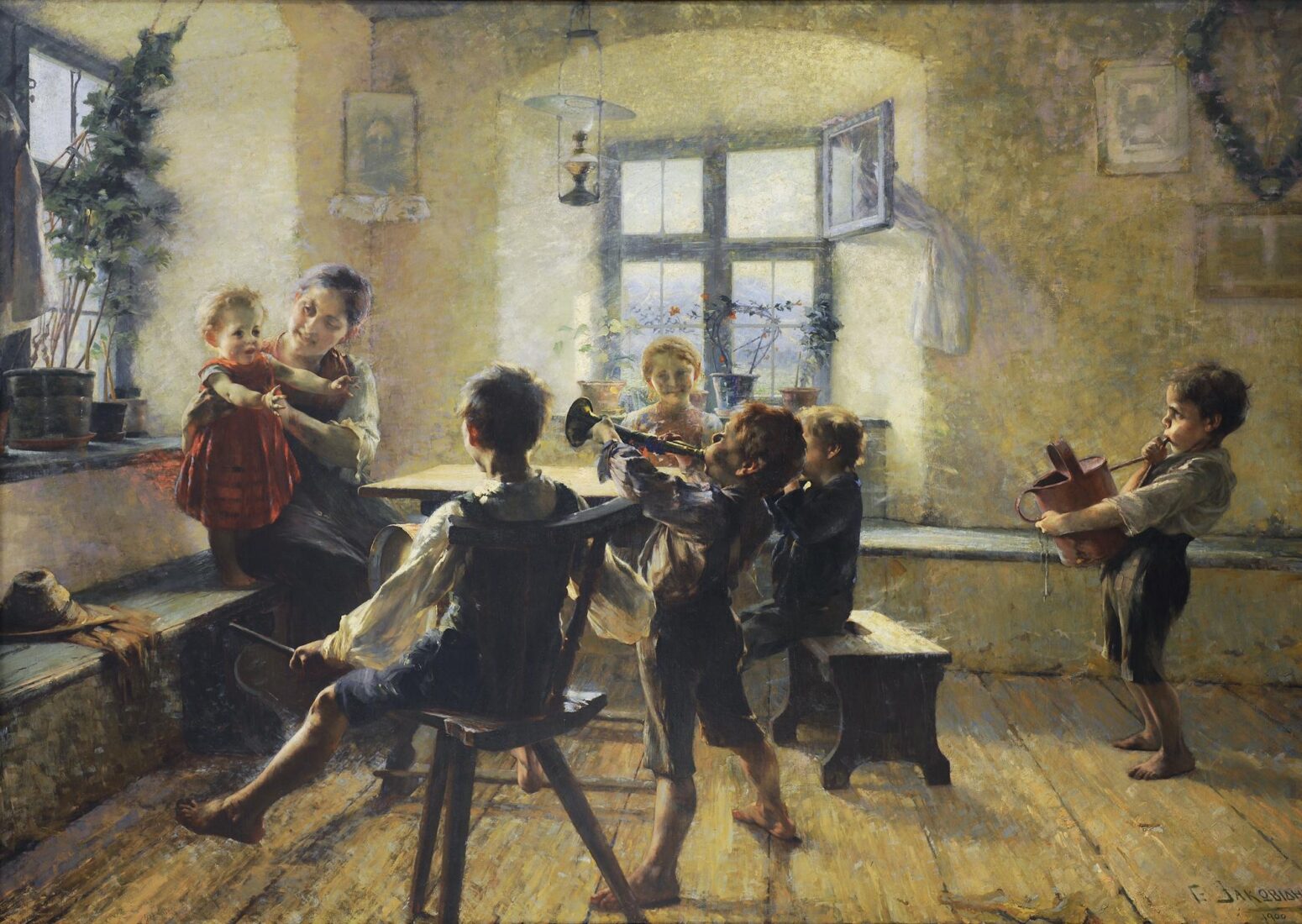We use cookies to make our site work properly, to personalize content and ads, to provide social media features and to analyze our traffic. We also share information about how you use our site with our social media, advertising and analytics partners. Read the Cookies Policy.

Iakovidis Georgios (1853 - 1932)
Children’s Concert, 1900
Oil on canvas, 176 x 250 cm
The “Children’s Concert” is one of Jakovides’ boldest works with respect to technique and lighting. The merry scene is set in the bright interior of a Bavarian village home, lit up by two windows, one on the left and one in the centre. These windows doubly illuminate the scene, and the light entering in two opposite directions poses a problem, which the artist resolves masterfully as we shall see. But let us first meet the characters: the four young musicians. The first one, seated, is playing the drum, the second is straining in order to blow into the trumpet, the third one, half-hidden, is probably playing the harmonica, and the fourth one, standing further on the side, in lack of a proper instrument, is blowing hard into a bright red watering bucket. All the children are barefoot. Which is the audience of this children’s concert? The mother, seated on the left, close to the window, but mainly the little sister, her arms extended towards the musicians. Another older sister is seated in front of the main window, full of flowers. The painter is “watching” the scene from above, which is why the floor boards have been drawn in perspective.
The protagonists in this musical, vibrant feast, are light and colour. The entire scene is bathed in orange hues, which become even bolder as the painter places their complementary colour, blue, adjacent to them. The light comes from two opposite directions, making the volumes of the children dark and heavy, whereas the outlines are intensely illuminated. Thus, the first boy’s shirt becomes almost transparent. The face of the elder girl has “melted” into the light. Here, Iakovidis pushes his art to the extreme, in other words, Impressionism.
This work has been painted in two versions. The earlier one was first shown in 1896, during the first Olympic Games in Athens. Its colours were on the cool, grey side, as Emmanouil Roidis remarked. Iakovidis repeated the painting in order to send it to the 1900 Paris World Fair, where it earned a prize. This brighter version is the one we are now able to enjoy at the National Gallery.

